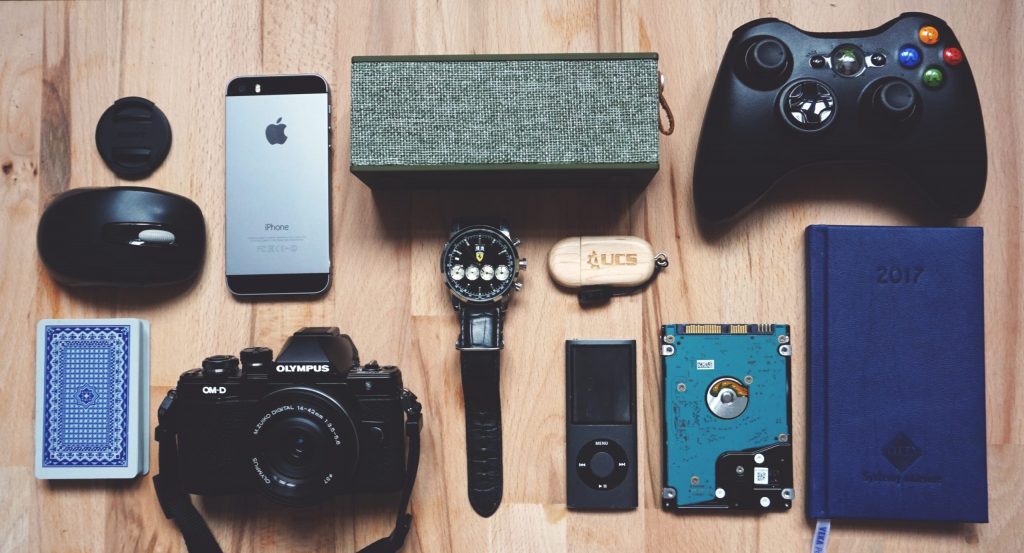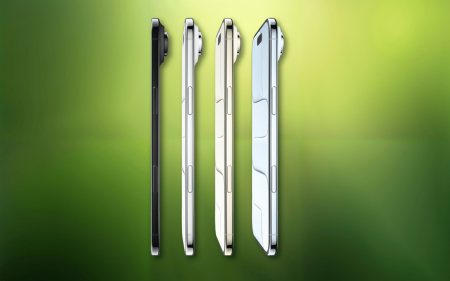As decades go, the last 10 have been quite remarkable for the amazing technology innovations that came out. In 2010 Steve Jobs introduced the iPad. Although it was to be his last great product reveal, in many ways I think it set the tone for the decade: clever upgrades of previous categories and the plateauing of the innovation curve.
But the usefulness of the new products, and sometimes the categories they created, is why we’re such fans of technology, isn’t it.
Looking back over the last decade, there are noteworthy innovations that have changed the way we do things. Think of the changes that would ultimately arrive after the iPhone 5 made a fingerprint reader that really worked. The 2012 arrival of the fingerprint reader was a pivotal moment in smartphones. Biometrics has become a standard now on high-end phones, especially facial recognition, within five years of that first fingerprint reader. Now, they are beautifully buried beneath the screen in Samsung and Huawei devices. That’s how far we’ve come.
There were some other noteworthy shifts, especially in smartphones and especially in their operating systems. The once almighty BlackBerry ditched its own OS in 2015 and switched to Android. By then the original mobile email device was a shadow of its former self, and not even this radical shift could rescue its fortunes.
A brand-new operating system was all the rage in 2019, surprisingly because it is aimed at feature phones. KaiOS began life as the much-heralded Firefox OS – a spin-off of the popular browser. When it was canned by the Mozilla, which makes Firefox, its management took it over and turned keypad phones into rudimentary smartphones. It now has 100 million users, which is nothing to sneeze at.
MTN and Orange sell the $20 Super S phone, which runs on KaiOS and is a brilliant device for first-time internet users who can’t afford the pricier touchscreen smartphones. It’s just as handy for elder people who are familiar with the keypad interface but whose kids (and grandkids) want to get hold of them on WhatsApp.
But, let’s do this chronologically.
iPad (2010)
 Steve Job’s last great reveal – his last “and one more thing” – was to be the iPad. It was an entirely new category of device for Apple, if not all the other tablet makers, and would prove to be a brilliant success. Applying the legendary minimalism that Jobs instilled in the iPhone, the iPad turned media consumption into a lean-back experience on the iPad. But it was a powerful new computer, with an impressive touch screen. My friend Justice Malala wrote an entire book on an iPad touchscreen.
Steve Job’s last great reveal – his last “and one more thing” – was to be the iPad. It was an entirely new category of device for Apple, if not all the other tablet makers, and would prove to be a brilliant success. Applying the legendary minimalism that Jobs instilled in the iPhone, the iPad turned media consumption into a lean-back experience on the iPad. But it was a powerful new computer, with an impressive touch screen. My friend Justice Malala wrote an entire book on an iPad touchscreen.
The last year of the decade saw a sudden wind in the sails of the iPad range, especially the more powerful iPad Pro line. Out went Apple’s default Lightning adaptor, and in came the now-global standard of USB-C. A more useful stylus, which Jobs would have hated, now charges when it’s magnetically clipped to the side. These tablets, with clever attachable Bluetooth keyboards, are now legitimate alternatives to many laptops and more appropriate tools for many kinds of work.
Samsung Galaxy Note (2011)
 There was a time before October 2011 that a cross between a smartphone and a tablet would be a foolish and impractical thing to do. But that was before Samsung unveiled the first of its so-called phablets (or a combination of phone and tablet) at Berlin’s IFA conference. It immediately wowed users and attracted scorn from naysayers. Its 5.3-inch display was considered too big for a smartphone, while its S Pen stylus seemed anachronistic against the iPad.
There was a time before October 2011 that a cross between a smartphone and a tablet would be a foolish and impractical thing to do. But that was before Samsung unveiled the first of its so-called phablets (or a combination of phone and tablet) at Berlin’s IFA conference. It immediately wowed users and attracted scorn from naysayers. Its 5.3-inch display was considered too big for a smartphone, while its S Pen stylus seemed anachronistic against the iPad.
But Samsung carved out its very own new product category with this larger-screen smartphone. It opened up the expansion of a bigger market, as much as making bigger and bigger screens the norm.
Kindle Paperwhite (2012)
 The arrival of backlit screens on the wondrous Kindle was a pivotal moment. Kindles use a clever technology known as electronic ink, or e-ink. It’s very easy on the eye for reading and even easier on the battery for power use. Amazon’s engineers cleverly included the soft LED lighting on the edges of the 6in screen, pointing inwards and deliberately not backlit, which would have had them pointing into the reader’s eyes.
The arrival of backlit screens on the wondrous Kindle was a pivotal moment. Kindles use a clever technology known as electronic ink, or e-ink. It’s very easy on the eye for reading and even easier on the battery for power use. Amazon’s engineers cleverly included the soft LED lighting on the edges of the 6in screen, pointing inwards and deliberately not backlit, which would have had them pointing into the reader’s eyes.
Kindles are, to my mind, the best thing that has happened to reading since books themselves. I am an avid reader and have been falling asleep for half a lifetime with the bedside light on, or unable to read in bed because of a light-sensitive partner. But the self-lit Paperwhite changed all of that. It also introduced a higher resolution screen.
Amazon Oasis 1 (2016) and 2 (2017)
 I just can’t help myself. I still own both models of the Kindle Oasis and truly can’t decide which I love more.
I just can’t help myself. I still own both models of the Kindle Oasis and truly can’t decide which I love more.
I keep the more compact gen one model for travelling and read every day with the gen two. The first Oasis was just groundbreaking. Kindles had ditched their buttons since the Touch model in 2011, just as iPad mania was ramping up. The Oasis One brought back the buttons, but only one set (of forwards and backwards) on one side, which was thicker than the other. To read with a different hand, you flipped the screen over. It was magic.
And, it was tiny. Even with the cover that contained an extra battery. It was the niftiest and most compact of travel companions. I could not forsake it when the Oasis Two launched the following year.
In Kindle terms, it had numerous significant new features. Firstly it was waterproof – a seemingly essential feature for a device so often read in baths and pools – and secondly, it introduced Bluetooth audio. It had the same asymmetric design and ditched the need for an external battery in the cover. It’s encased in glossy aluminium, which took some getting used to. But the screen quality is amazing and it’s the easiest thing to read on – especially at night in bed, as the light automatically turns off.
As a kid, I was called a “bookworm” and was often bust reading books under the covers with a torch by my parents. If only I had the Oasis Two back then.
SpaceX Grasshopper (2012) and Tesla Model S (2012)
 Two technologies that leapt (literally) into the world were the SpaceX Grasshopper (2012) and Tesla Model S (2012). And their origins, by way of their founder and CEO, are surprisingly South African. Pretoria-born Elon Musk is now legendary and two of his great contributions to the world (cheaper space travel and electric cars) took a further technological leap in the past decade.
Two technologies that leapt (literally) into the world were the SpaceX Grasshopper (2012) and Tesla Model S (2012). And their origins, by way of their founder and CEO, are surprisingly South African. Pretoria-born Elon Musk is now legendary and two of his great contributions to the world (cheaper space travel and electric cars) took a further technological leap in the past decade.
On Monday, October 7th, 2013, the SpaceX craft called Grasshopper flew up 744m into the air and settled back down on the launchpad in McGregor, Texas, after an uneventful 78.8 seconds flight. Musk had just proved it was possible to do something thought of as impossible for so long. Until now, the first stages of space rockets were discarded after launch, usually to plunge into the sea. Musk had just shown that you can reuse your valuable equipment with a 10-story Vertical Takeoff Vertical Landing (VTVL) rocket called Grasshopper.
This technology would become a regular part of other SpaceX launches, although it took a few landing attempts before the rockets stopped exploding. Musk joking called these explosions, caught on numerous cameras, “rapid, unscheduled disassembly’s”.
On June 22, 2012, deliveries began of the first Tesla car, the five-door Model S. It was to be a game changer in the car industry, and set off a green tech arms race by the rest of the industry to produce as wonderful, and green, cars.
Musk has had other successes with other models – except the windows of the Cybertruck – but the Model S started it all and showed that you could make a sexy, fast, desirable and electric car that people wanted to own.
It won a string of motoring awards and was one of Time magazine’s Best 25 Inventions of the Year in 2012.
Brought to you by Incredible Connection. For the next decade of iconic tech, visit any of the more than 80 Incredible Connection stores around the country where you’ll find everything you could possibly want. At Incredible, the list of awesome tech isn’t just restricted to the greatest hits – though those are certainly here. Fitness tech and wearables, camera and photography accessories, software, networking, smart home, software, office equipment and entertainment gadgets all have a home at Incredible Connection. Where they patiently wait before heading on to their new homes. To your home, at the end of the day. Whether it’s the latest round of smartphones, computers, notebooks and all the accessories that go with it or the best gaming and gear in the country, you’ll find it all in one place at an always excellent price.
Welcome to Incredible Connection. Live Connected.





